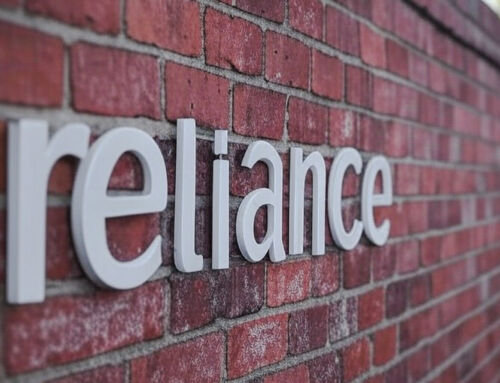View by Topic
Recent Articles
-
States Challenge Validity of New York’s Climate Change Superfund ActSaturday, March 8th, 2025
-
House Votes to Protect the Hot Water Heater in Your HouseSaturday, March 1st, 2025
-
EPA Transmits California Electric Vehicle Waivers to Congress for RepealSaturday, February 22nd, 2025
-
SEC Reverses Course on Defending its Climate Related Disclosure RuleSaturday, February 15th, 2025
-
Reliance Letters: An Essential Part of Phase 1 Environmental Site AssessmentsSaturday, February 8th, 2025
View by Month/Year
“Green Building Law Update” Headlines
Recent Articles & News from
Stuart Kaplow’s blog
at GreenBuildingLawUpdate.com
- States Challenge Validity of New York’s Climate Change Superfund Act March 9, 2025
- House Votes to Protect the Gas Water Heater in Your House March 2, 2025
- EPA Moves to Overturn California’s Motor Vehicle Emission Standards February 23, 2025
- SEC Climate Disclosure Rule: A Dramatic Reversal Under Trump February 16, 2025
Subscribe to the Green Building Law Update!
Stuart Kaplow brings his expertise and extensive experience to the table with his unique digital publication, "Green Building Law Update". Subscribers receive regular updates to keep them informed about important issues surrounding Environmental Law, Green Building & Real Estate Law, as well as the emerging demand for Environmental Social Governance (ESG).
Get fresh content through the lense of Stuart Kaplow's cutting-edge expertise, innovative commentary and insider perspective. Don't miss another issue! Subscribe below.

PFAS in a Phase I Environmental Site Assessment?
The question de riguer in commercial real estate transactions is if PFAS is included in a Phase I Environmental Site Assessment?
As made clear by the January 14, 2021 EPA action, the response is “no” that the standard practice for environmental site assessments in the vast majority of places does not consider PFAS, however, ..
Per and polyfluoroalkyl substances are a group of more than 4,000 man-made chemicals that include PFOA, PFOS, GenX, and many other chemicals. PFAS has been manufactured and used in a variety of industries around the globe, including in the United States since the 1940s and have been the most extensively produced and studied of these chemicals. PFAS is very persistent in the environment and in the human body, meaning these chemicals don’t break down, accumulating over time, and as such have been referred to ‘forever chemicals’ making them an emergent environmental catastrophe.
The EPA reports, “there is evidence that exposure to PFAS can lead to adverse health outcomes .. studies indicate that PFAS can cause reproductive and developmental, liver and kidney, and immunological effects in laboratory animals, .. and have caused tumors in animal studies.”
A peer reviewed study cited approvingly by the EPA describes 99.7% of Americans have a detectable PFAS in their blood!
Against that backdrop, the stated purpose of the ASTM Standard E1527-13 Phase I Environmental Site Assessment process is “to define good commercial and customary practice in the United States of America for conducting an environmental site assessment of a parcel of commercial real estate with respect to the range of contaminants within the scope of the Comprehensive Environmental Response, Compensation and Liability Act (CERCLA) (42 U.S.C. §9601) and petroleum products.”
The term “recognized environmental conditions means the presence or likely presence of any hazardous substances or petroleum products in, on, or at a property ..”
“.. a substance defined as a hazardous substance pursuant to CERCLA 42 U.S.C.§9601(14), as interpreted by EPA regulations and the courts: (A) any substance designated pursuant to section 1321(b)(2)(A) of Title 33, (B) any element, compound, mixture, solution, or substance designated pursuant to section 9602 of this title, (C) any hazardous waste having the characteristics identified under or listed pursuant to section 3001 of the Resource Conservation and Recovery Act of 1976 (RCRA), as amended.”
PFAS is not a CERCLA nor a RCRA listed hazardous substance.
Such was confirmed on January 14, 2021, when EPA issued an Advance Notice of Proposed Rulemaking to get public comment and data to inform the agency’s ongoing evaluation of PFAS. That public comment may influence additional regulatory steps, if any, maybe even CERCLA listing?
Of course there may be environmental issues or conditions at a property that parties may wish to assess in connection with a commercial real estate transaction that are outside the scope of a Phase I, these are known in ASTM parlance as “non-scope considerations” and may be included in the Phase I report. Such would generally be a bad idea perverting a Phase I, however might be prudent at a property where PFAS was produced or incorporated into manufacturing or other processes. But what would the seller and buyer do if PFAS was detected?
Additionally, there are a limited number of places where PFAS is regulated as state hazardous substance, like Michigan where should likely be included in a Phase I. And there is at least one place where there appears to be a complete disconnect, as I described last year in a post, Maryland the First State to Legislate Permitted Use of PFAS.
The broad consensus of environmental professionals in the know is that there is simply no good reason to consider PFAS in a commercial real estate transaction and only negatives that can flow from these widespread chemicals that are nearly everywhere and are in nearly everyone’s blood.
This law firm has been advising and counseling clients in PFAS related matters since 2009, including in real estate transactions this past year, one of which was adjacent to a commercial airport, another had previously been a fire station and a third was a marina; each a place where one would anticipate PFAS laden fire suppression foam had impacted the environment.
Despite that they will not read about it in a Phase I report, all those with an interest in commercial real estate should be aware of how pervasive PFAS is in the economy and the environment, and the associated risk associated with this forever chemical, including what will no doubt be changing laws and emergent litigation as the legal system catches up to the science.









